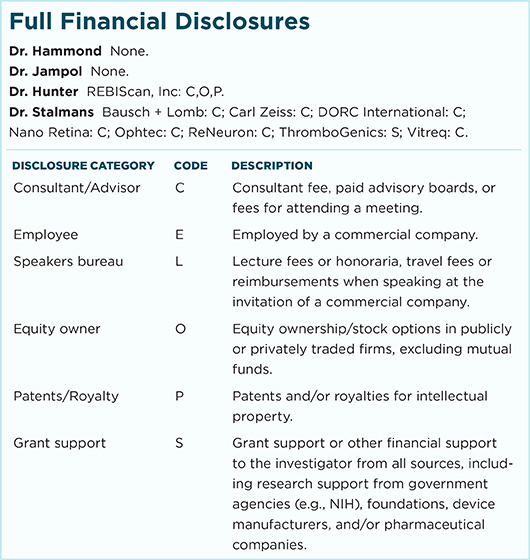Download PDF
Onabotulinumtoxin A (BOTOX), used for decades in the treatment of adult strabismus, may now have a role in the treatment of children with a rareform of esotropia. Researchers at Boston Children’s Hospital have found that Botox injection was not inferior to surgery in children with acute-onset comitant esotropia.1
“Furthermore, the cost of treatment with botulinum toxin was significantly lower, and patients spent less time in the hospital,” said David G. Hunter, MD, PhD, ophthalmologist-in-chief at Boston Children’s Hospital.
Study details. The retrospective nonrandomized comparative clinical study involved 49 children who had undergone esotropia treatment at Boston Children’s Hospital from 2000 to 2014. Of those, 16 had been treated with botulinum toxin, and 33 had undergone strabismus surgery.
Although the study was not randomized, the decision for treatment was the random result of which doctor happened to see the patient at presentation. Prior to 2009, all patients underwent strabismus surgery, after which several surgeons began using Botox exclusively, Dr. Hunter said. “Ours is probably the best data clinicians will have to make a treatment decision.”
Results. There were no significant differences between the 2 groups in terms of success rate, angle of deviation, or stereoacuity at 6 or 18 months. Among the findings:
- At 18 months, the success rate of the initial treatment was 67% in the injection group, and 58% in the surgery group.
- Duration of anesthesia was 71 minutes in the surgery group versus 5 minutes in the injection group. And time spent in the postanesthesia care unit was 93 minutes after surgery versus 37 minutes postinjection.
- Treatment cost was approximately $1,909 (69%) less with injection.
- At 6 months, failure occurred in 3 of 16 children in the injection group and 13 of 33 in the surgery group.
No serious complications. Each group had unique complications, the researchers said, but this did not favor one treatment over the other.
Half the children in the chemodenervation group experienced transient postoperative ptosis, and 56% experienced transient exotropia, complications that do not occur following surgery. After resolution—about 6 weeks for ptosis and 8 weeks for exotropia—none of the children developed new or worsening amblyopia. In the surgical group, complications included conjunctival injection and scarring.
Clinical implications. Dr. Hunter cautioned against extrapolating the results to all forms of esotropia. Acute-onset comitant esotropia is notable for the high degree of binocular function that most patients have before developing the rare condition, he said. “The botulinum toxin can be thought of as a way of resetting the alignment of the 2 eyes, allowing the brain to rediscover binocular vision and regain a hold on normal alignment.”
Prior to the study, Dr. Hunter had confidence offering Botox as a first-line treatment, though he told parents that retreatment might be necessary. “Now I am able to offer botulinum toxin with-out having to offer that caveat, anticipating that a single injection will correct the problem in most cases, with really no reason to choose surgery,” he said.
“But regardless of which treatment option one selects, there is always a chance that more treatment will be needed, and I don’t believe either choice can minimize that chance.”
—Miriam Karmel
___________________________
1 Wan MJ et al. Am J Ophthalmol. 2017;176(4):33-39.
___________________________
FDA disclosure: Botox is FDA approved for treatment of adults and children over age 12. The use in children under age 12 is considered off label.
___________________________
Relevant financial disclosures—Dr. Hunter: REBIScan: C,O,P.
For full disclosures and disclosure key, see below.

More from this month’s News in Review